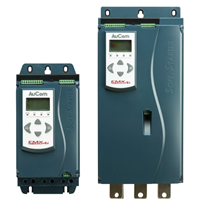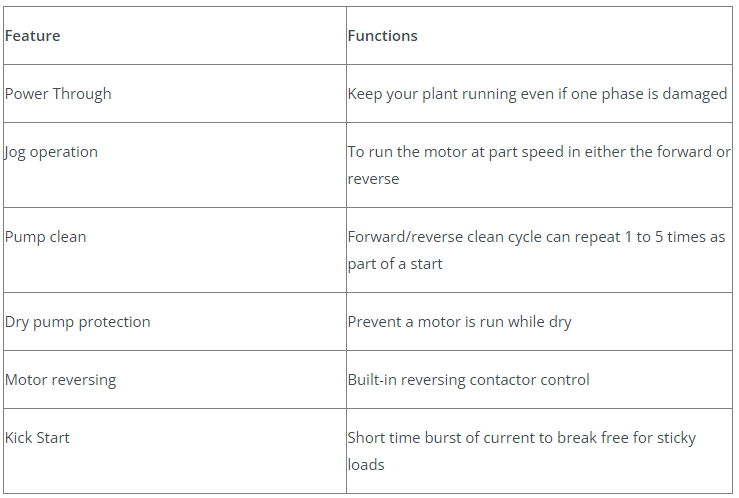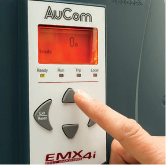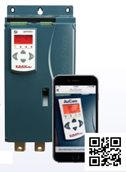Motors can frequently require a large amount of energy when they accelerate up to full speed. A soft starter is used to reduce the inrush currents, useful if you want to protect your equipment, extend the life of your motor, and reduce motor heating with frequent starts and stops.
So, a soft starter provides a gentle acceleration up to full speed and they are used for controlled starting and stopping.

EMX4i – The most advanced smart soft starter
Smart does not have to mean complex. The EMX4i has been designed to make your life easier with an intuitive display and connectivity functions.
The new EMX4i soft starter helps ensure enhanced productivity of your operation. The EMX4i doesn’t just start and stop your machinery with precision and efficiency, it also helps you minimize energy costs and improve operational effectiveness through the delivery of meaningful data to both operators and plant automation systems. It also introduces the game changing Smart Card capability. Fitting a Smart Card to the EMX4i transforms it from super smart motor controller to complete system controller.
Why EMX4i Advanced?
The EMX4i soft starter series sets new standards for soft starter technology. It is smaller and powerful, equipped with new features.
Main voltage: 200-525V AC, 380-690V AC, 1000-1200V AC and Current rating: 24 A - 1250 A (With internal bypass),
Supports energy efficiency compatible with IE3 motors, quick setup ready for many applications, extensive embedded inputs, and outputs, Versatile starting and stopping options, fully adjustable protection functions
ADVANCED OPERATING FUNCTIONS
Timers and calendars - Scheduled start/stop

Built-in calendar mode provides maximum flexibility for configurable time of day and day of week control and Time mode for cyclic control, allowing different Run & Stop time periods.
Simple commissioning and maintenance
The EMX4i offers more functionality than before, it has been designed to make your life easier.
A Starter for the future
The soft starter EMX4i includes starter, motor, and system protection functions, complete with alarms to alert you to any potential issues. In addition, connection to other devices and support services are easier. Connectivity has been enhanced with a range of communication cards to enable network connections and increase accessibility.

By enhancing the display and connectivity functions, and making them intuitive, it is easier to access the right information when you need it, enhancing your overall efficiency.

The new USB port allows straightforward upload, download and storage of starter performance information, increasing your ability to manage the system effectively.

Troubleshooting starting and stopping issues are now easier than ever with the Pocket Technician app. Easily retrieve useful data from any EMX4i soft starter, including starter model, status, and details of the last three trip events. View the data on-site and diagnose issues in the field, or share it with your local support team for further assistance.

|